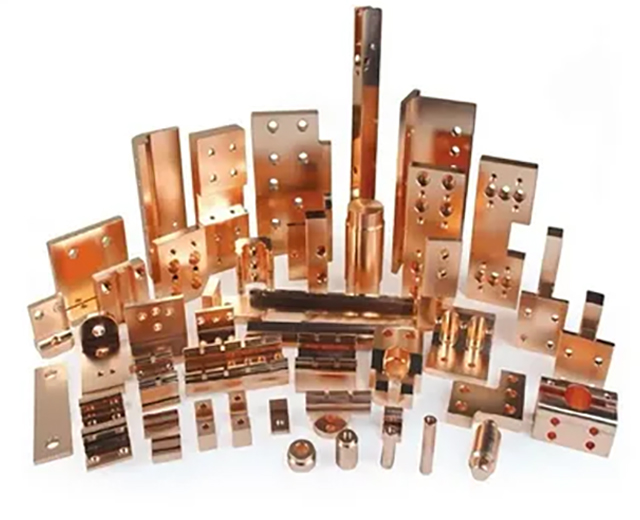2025-11-07 10:07:37
In any electrical power system—from residential distribution boards to large industrial substations—busbars play a critical role in safely and efficiently distributing electrical power. But what is a busbar, and what is a busbar used for? This detailed guide explains the purpose, working principle, structure, available variations, advantages, and the industries where busbars are used.

A busbar (also written as bus bar) is a high-conductivity metallic strip used as the main pathway for electrical current inside power distribution systems. It acts as a central connection point that collects, carries, and distributes electrical power to various circuits or equipment.
Busbars are commonly made from:
| Material | Characteristics | Where Used |
|---|---|---|
| Copper Busbar | High conductivity, durability | High-power systems, industrial cabinets |
| Aluminum Busbar | Lightweight, cost-efficient | Large-scale distribution, power grids |
| Flexible Copper Busbar | Bendable, vibration-resistant | Battery systems, EV packs, tight spaces |
| Solid Copper Busbar / Solid Busbar | Rigid & stable | Fixed power cabinets and switchboards |
Thus, a busbar system refers to the complete configuration of busbars, connecting terminals, insulators, and mounting elements inside an electrical distribution panel.
The primary function of a busbar is to distribute electrical current from one source to multiple circuits while maintaining electrical stability and minimizing energy loss.
More specifically, busbars are used to:
Busbars allow power from a supply (generator, battery pack, inverter, or transformer) to be routed efficiently to multiple loads.
Due to their large surface area and low electrical resistance, busbars provide better current-carrying capacity than conventional cables.
Using busbars avoids messy cabling and reduces chances of:
overheating
short-circuits
arc faults
maintenance errors
When new devices need to be added, busbars provide simple connection points instead of rewiring entire systems.
A busbar works by serving as the main conductive backbone of an electrical network:
Power Source → Busbar → Distribution Circuits / Loads
Electrical current enters the electrical bus bar, flows along the solid or flexible conductive strip, and is then tapped off through connectors to supply:
Machines
Switchgear
Lighting systems
Battery modules
Renewable energy systems
By equalizing current and voltage, the busbar ensures a stable and uniform power supply across all connected equipment.
Made of high-conductivity electrolytic copper
Used in heavy-duty industrial electrical systems
Excellent heat dissipation
Common Forms:
Solid Copper Busbar – rigid power distribution
Flexible Copper Busbar – laminated / braided type for vibration & bending
Copper Busbar Connector (Custom Busbar) – tailor-made for device fitment
Lightweight and cost-effective
Suitable for large substations and utility grids
Often used when weight reduction is prioritized
Made from braided copper, laminated copper layers, or coated flat conductor
Ideal for battery packs, EVs, solar inverters, rail traction systems
Variations:
| Type | Features | Usage |
|---|---|---|
| Flexible Copper Busbar | Conducts high current + bendable | Battery banks, UPS, EV |
| Flexible Aluminum Busbar | Cost-effective flexible conductor | Low-to-medium voltage |
| Insulated Flexible Busbar | PVC / EPDM / FR-coated | Safe in compact wiring systems |
| Advantage | Explanation |
|---|---|
| Higher Efficiency | Lower resistance → less heat loss |
| Lower Space Usage | Compact design fits dense electrical enclosures |
| Stronger Mechanical Performance | Withstands heat, vibration, and long-term load |
| Easy Installation & Maintenance | Simplified connection and expansion |
| Improved Safety | Reduced risk of short circuits and overheating |
This makes busbars especially valuable in high-current and critical reliability applications.
Busbars are essential in the following industries:
Switchgear
Breaker panels
Substations
Power plants
CNC machine power networks
Factory automation control panels
Solar inverter arrays
Energy storage battery banks
Wind turbine distribution cabinets
EV Battery Busbar System
Hybrid vehicle high-voltage power routing
UPS power distribution racks
Server power routing backplanes
High vibration environments requiring flexible busbars.
Manufacturers offer Custom Busbars tailored to:
system voltage and current
shape and bending direction
surface plating (tin, silver, nickel)
insulation coating
mounting hole spacing
This ensures perfect fit and maximum conductivity for the customer’s device.
Busbars form the backbone of any electrical power distribution system.
They distribute current efficiently, reduce wiring complexity, increase system reliability, and ensure safe operation in high-energy environments.
If cables are the roads, then busbars are the highways of electrical power transmission.